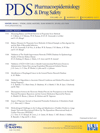Drug certainty-response in interview-based studies
ABSTRACT
Purpose
Imperfect recall of exposure timing challenges the ascertainment of medications in interview-based studies.
Methods
We propose an algorithm to classify medication exposure, taking into account recall certainty. The availability of medication use details, including duration of use, start and stop dates, and maternal estimates of how certain they were about these dates, allowed classification of subjects as either likely or possibly exposed in the first trimester of pregnancy. We applied the algorithm to study an association between prenatal tetracycline exposure and risk of congenital heart defects previously reported by the National Birth Defects Prevention Study, using 1993–2008 data from 11 517 subjects in the Slone Epidemiology Center Birth Defects Study.
Results
Among women exposed to tetracyclines during pregnancy (n = 58), 50% and 19% were likely and possibly exposed, respectively, in the first trimester, and 31% were exposed outside the first trimester. Compared with non-use during pregnancy, the crude OR for exposure outside the first trimester was 1.0 (95%CI 0.4–2.5), and that for exposed (likely or possibly, combined) in the first trimester was 1.7 (95%CI 0.9–3.2); however, the ORs based on the algorithms were 0.9 (95%CI 0.3–3.0) for possibly exposed and 2.2 (95%CI 1.0–4.6) for likely exposed.
Conclusions
A “certainty-response” (stronger association with higher level of certainty) was found within exposures in the window of etiological interest. Algorithms for exposure classification that incorporate recall certainty may be useful in interview-based studies. Copyright © 2011 John Wiley & Sons, Ltd.




